 W
WAustroderia richardii, syn. Cortaderia richardii, is a species of flowering plant in the family Poaceae. It is an evergreen perennial grass. The genus Austroderia is often called "pampas grass", though this name usually refers to A. selloana. "Early pampas-grass" is a more specific name. The name "tussock grass" may also be found. The Maori name is "toetoe". It is one of five species in the genus Austroderia that are endemic to New Zealand. It occurs in the South Island and possibly also in the North Island. It is also an introduced species in Tasmania, Australia.
 W
WBeilschmiedia tawa, the tawa tree, is a New Zealand broadleaf tree common in the central parts of the country. Tawa is often the dominant canopy species in lowland forests in the North Island and the north east of the South Island, but will also often form the subcanopy in primary forests throughout the country in these areas, beneath podocarps such as kahikatea, matai, miro and rimu. Individual specimens may grow up to 30 metres or more in height with trunks up to 1.2 metres in diameter, and they have smooth dark bark. The word "tawa" is the Maori name for the tree.
 W
WCarex dallii is an uncommon species of sedge native to the South Island of New Zealand. Its culms are approximately 500×0.5 mm when mature, and rhizomes are about 1 mm diameter.
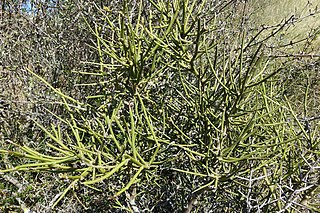 W
WCarmichaelia petriei is a species of New Zealand broom belong to the genus Carmichaelia. It is endemic to New Zealand. C. petrieis is possibly a host plant for the critically endangered fungus weevil Cerius otagensis.
 W
WChionochloa flavescens, known as broad-leaved snow tussock or haumata in Māori. Endemic to New Zealand, there are several different sub species that look very similar. The leaves which are up to one centimetre wide is larger than most tussocks similar to it. The flower-plumes of about 30 cm appear around December/January and are quite open compared to C. conspicua and C. flavicans.
 W
WChionochloa rubra, known commonly as red tussock grass, is a species of tussock grass in the grass family.
 W
WCoprosma repens is a species of flowering shrub or small tree of the genus Coprosma, in the family Rubiaceae, native to New Zealand. Common names include taupata, tree bedstraw, mirror bush, looking-glass bush, New Zealand laurel and shiny leaf.
 W
WDaucus glochidiatus, commonly known as Australian carrot, Austral carrot or native carrot, is a species of herb in the flowering plant family Apiaceae. It is native to Australia and New Zealand.
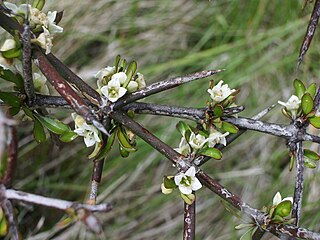 W
WDiscaria toumatou, commonly called matagouri, is a tangle-branched thorny plant endemic to New Zealand. An alternative but less used name for the plant is "wild Irishman". The name matagouri is how speakers of English heard the South Island pronunciation of the Māori name "matakoura". It is also known as tūmatakuru.
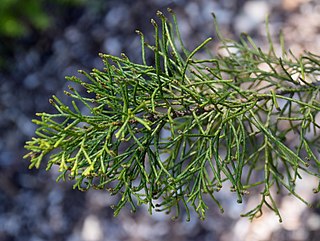 W
WHalocarpus biformis, known commonly as yellow pine or pink pine, is a coniferous tree endemic to New Zealand. The tree can attain heights of 10 m, but is usually a low-spreading bush in open areas. It is found at higher elevations in the volcanic plateau of the North Island and at lower elevations of the South Island and Stewart Island. It yields a tight-grained, sweet-smelling, and extremely durable wood. The species was formerly known as Dacrydium biforme.
 W
WLaurelia novae-zelandiae, also called pukatea, is a large evergreen tree, endemic to the forests of New Zealand. Pukatea has 'toothed' leaves and produces small flowers. It is a species in the Atherospermataceae family, typical representative of laurel forest ecoregion.
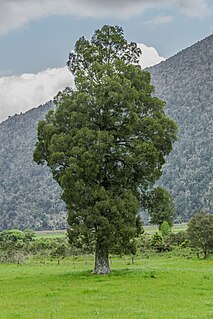 W
WLibocedrus bidwillii, also called pāhautea, kaikawaka or New Zealand cedar, is a species of Libocedrus, endemic to New Zealand. It is in the cypress family Cupressaceae.
 W
WLibocedrus plumosa, with the common name kawaka, is a species of Libocedrus that is endemic to New Zealand.
 W
WOlearia lyallii is a New Zealand plant from the genus Olearia. It is commonly known as the subantarctic tree daisy. The species is endemic to the Snares Islands and southern New Zealand, and has also established itself as an introduced species on the Auckland Islands, where the type specimen was described from. O. lyallii forms trees up to 10 m tall with trunks 50 cm in diameter.
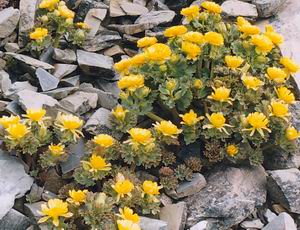 W
WRanunculus acraeus, more commonly known as Alpine buttercup, is a species of flowering plant in the buttercup family, Ranunculaceae, found in New Zealand. This rare and native species strictly grows on an alpine habitat, hence the name acraeus, meaning “on high”. The plant grows about 50 cm (20 in) in width, and is covered in beautiful, bright yellow flowers. It may be mistaken for R. piliferus but research has shown R. acraeus to be its own distinctive species.
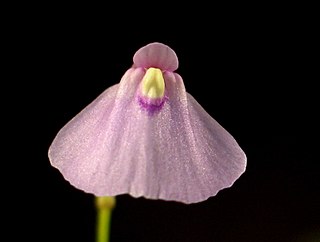 W
WUtricularia dichotoma, commonly known as fairy aprons, is a variable, perennial species of terrestrial bladderwort. The specific epithet is Latin for "dividing into pairs" and refers to the double arrangement of flowers which this species often displays.